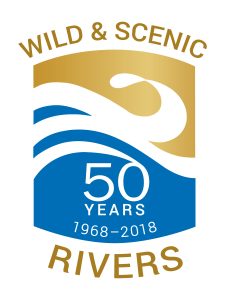Wild and Scenic Rivers at River Rally
 From the trout filled waters of Michigan’s Au Sable River, to the Amargosa—flowing mirage-like through the Mojave Desert, national wild and scenic rivers are shining examples of the waterways that course through the country. As the Wild & Scenic Rivers (WSR) Act turns 50 this October, River Network and many others are celebrating the Act’s successes—over 12,000 miles of 200+ rivers designated in 40 states and Puerto Rico—and pondering what comes next.
From the trout filled waters of Michigan’s Au Sable River, to the Amargosa—flowing mirage-like through the Mojave Desert, national wild and scenic rivers are shining examples of the waterways that course through the country. As the Wild & Scenic Rivers (WSR) Act turns 50 this October, River Network and many others are celebrating the Act’s successes—over 12,000 miles of 200+ rivers designated in 40 states and Puerto Rico—and pondering what comes next.
Over the last few months, we’ve been talking with grassroots organizations from around the country to learn more about the threats to their local wild and scenic rivers, and future needs for river advocates. Preceding this year’s River Rally in Olympic Valley, California, we are hosting a meeting to discuss some of our findings and to map out concrete actions and goals to help sustain the WSR system for the next 50 years. If you plan to attend River Rally and would like to interact with dogged wild and scenic river champions, consider registering for the April 29th Wild & Scenic River Pre-Meeting.
—
Here’s a sneak-peek of one of the issues we’ll likely be discussing at the Wild & Scenic River Pre-Meeting
National wild and scenic river status signifies a free-flowing channel with at least one unique and remarkable value (scenic beauty, cultural significance, wilderness surroundings, etc.), but it doesn’t mean the stretch of river is pristine or even in good ecological health. Many wild and scenic rivers face water quality concerns. Below are some examples of threats to wild and scenic rivers, and the actions taken by groups to address them.
- The famous trout-rich waters of Michigan’s Au Sable River are threatened by…more trout. About 30 miles upstream from the wild and scenic stretch, plans are in the works to operate a fish farm that will raise farmed trout on the river channel. There’s debate about how such an operation might affect wild trout populations downstream. A Clean Water Act permit would allow discharge of nutrients from the facility, which opponents of the project contend could increase algae and weed growth, ultimately lowering oxygen content and leading to fish die-offs. Anglers of the Au Sable, Sierra Club, and others are mounting a legal challenge.
- The Red River in eastern Kentucky flows through a dramatic sandstone gorge that attracts thousands of outdoor enthusiasts each year. Unfortunately, the river’s various tributaries are not protected under the Wild and Scenic River Act, and various threats to water quality exist. Kentucky Waterways Alliance partnered with the U.S. Forest Service and the Kentucky Division of Water to create the Red River Gorge Restoration and Watershed Plan. The plan lays out best practices that land owners along Red River tributaries can follow to reduce polluted runoff. The group is also focusing on repairing or replacing old septic systems, many of which leak sewage into nearby streams.
- The Middle Fork of the Vermilion River in eastern Illinois carves through glacial deposits, forming steep valleys and high bluffs. Prairie ecosystems, now largely cleared for farmland, can still be found along the river. But three coal ash (a coal-burning byproduct) ponds from a recently shuttered power plant sit along the wild and scenic stretch of the river, threatening groundwater and the river’s water quality. Prairie Rivers Network has worked to unite local governments and community groups around protecting the river. Also, the Network recently announced that it would take legal action against Dynegy, the owner of the coal ash ponds.
Come to the Wild and Scenic Rivers Pre-Meeting to hear more about the issues that these rivers face, the inspiring and effective work grassroots organizations are doing, and more!





